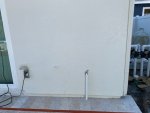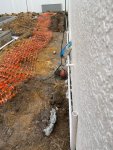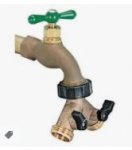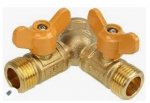I apologize in advance if this is posted in the incorrect area.
Since we are having a screen enclosure erected around the pool, it seemed like it would be a good idea to have a hose bib inside the enclosed area. This way instead of having to run the hose through a screen door when we want to use it we have easy access.
The pool builder ran sched 40 - 1" pipe near the existing hose bib and under the pavers and out along the wall. I asked my plumber to come out and see what they could do to hook up the new spigot. They mentioned adding a Tee connector at the existing spigot and then connecting a new spigot inside the enclosure. Much to my surprise the first price they said was $850! When they saw my face they called the office and it came down to $750. I said thanks for coming out and they left. The owner called me and said he would do it for $550 since we are an existing customer, yada, yada.
My question to any of you who might know. How difficult of a job is this to take on? Can I attempt myself?
Any guidance would be appreciated.
Thanks
Since we are having a screen enclosure erected around the pool, it seemed like it would be a good idea to have a hose bib inside the enclosed area. This way instead of having to run the hose through a screen door when we want to use it we have easy access.
The pool builder ran sched 40 - 1" pipe near the existing hose bib and under the pavers and out along the wall. I asked my plumber to come out and see what they could do to hook up the new spigot. They mentioned adding a Tee connector at the existing spigot and then connecting a new spigot inside the enclosure. Much to my surprise the first price they said was $850! When they saw my face they called the office and it came down to $750. I said thanks for coming out and they left. The owner called me and said he would do it for $550 since we are an existing customer, yada, yada.
My question to any of you who might know. How difficult of a job is this to take on? Can I attempt myself?
Any guidance would be appreciated.
Thanks









